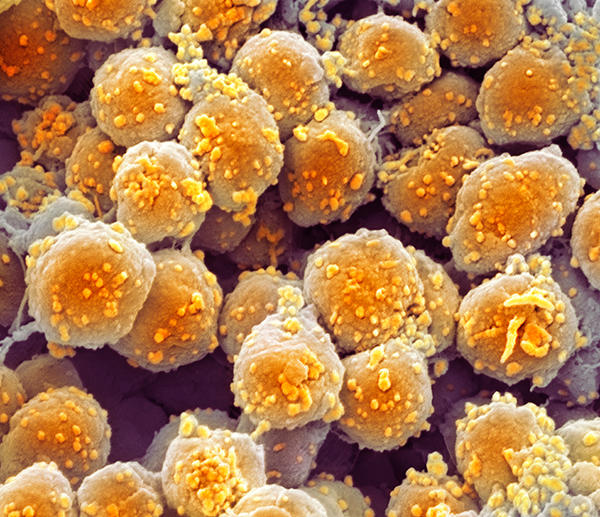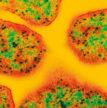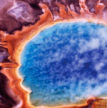Archaea
Archaea can be spherical, rod, spiral, lobed, rectangular or irregular in shape. An unusual flat, square-shaped species that lives in salty pools has also been discovered. Some exist as single cells, others form filaments or clusters. Until the 1970s this group of microbes was classified as bacteria.

Archaea are a group of micro-organisms that are similar to, but evolutionarily distinct from bacteria.
Many archaea have been found living in extreme environments, for example at high pressures, salt concentrations or temperatures. These types of organisms are called extremophiles. Their cell wall differs in structure from that of bacteria and is thought to be more stable in extreme conditions, helping to explain why some archaea can live in many of the most hostile environments on Earth.
Examples of archaea habitats are boiling hot springs and geysers such as those found in Yellow Stone Park, USA and ice such as the Arctic and Antarctic oceans, which remain frozen for most of the year.
Video
Learn more about archaea
-
Microbiology Today: Archaea
From extreme temperatures and highly acidic conditions to the insides of volcanoes and the depths of the ocean, a diverse group of microbes called archaea thrive in many places that most life can't survive. This issue of Microbiology Today highlights the importance of archaea and our current understanding of them.
-
Why don’t archaea cause disease?
Are there really no archaeal pathogens? And if not, why not? Dr James Chong explores these questions in a film and article for Microbiology Today.
-
Archaea and the Tree of Life
The third domain of life wasn’t even discovered until the 1970s. This mysterious group of organisms, archaea, remain one of the biggest puzzles in microbiology. Although superficially they look similar to bacteria, in evolutionary terms they couldn’t be more different.
Podcasts





